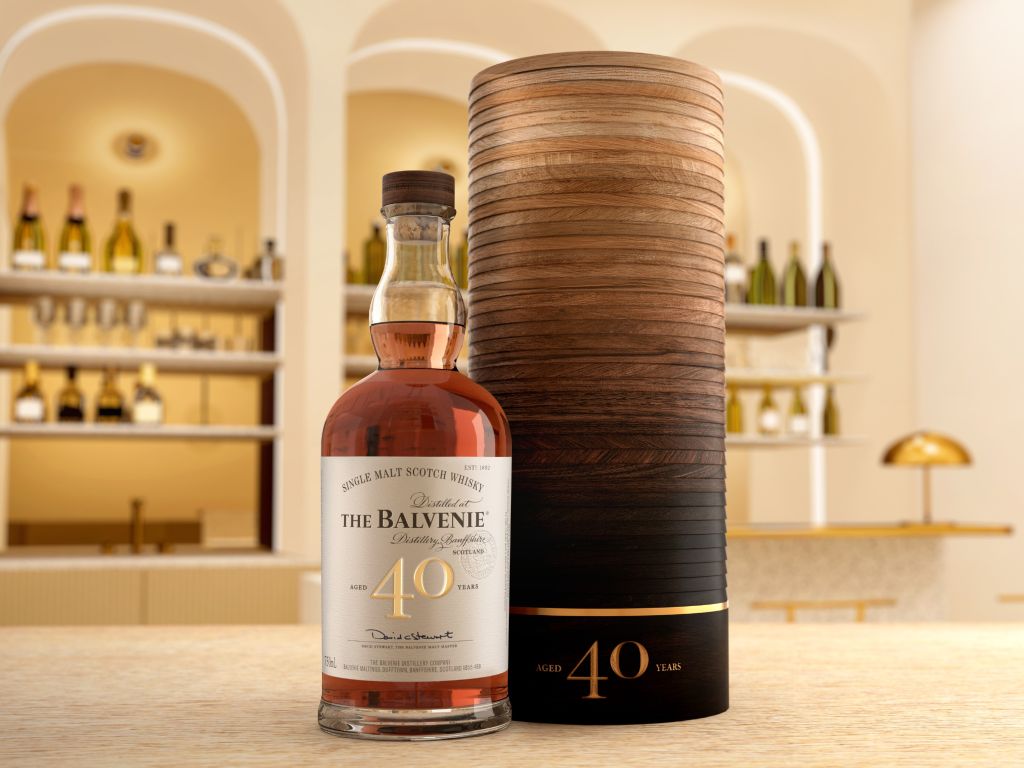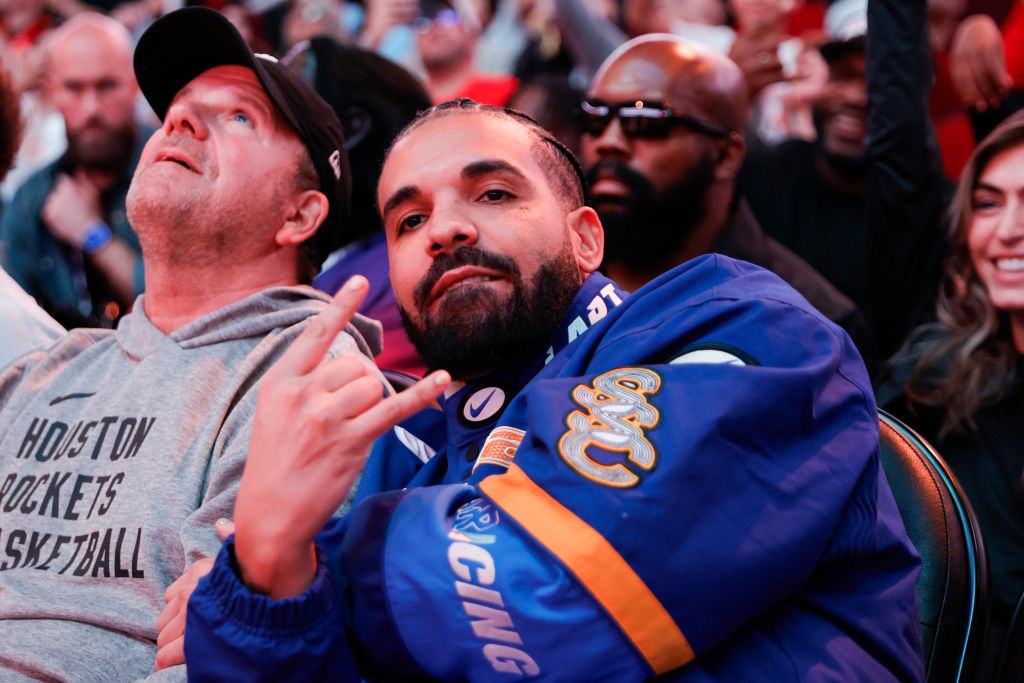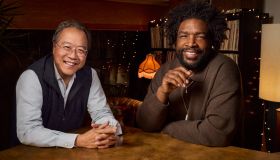
Source: WIlliam Grant & Sons / WIlliam Grant & Sons
The Balvenie was founded 130 years ago in the northeastern Scottish town of Dufftown, and its name translates from Gaelic as “Village of Luck.” But the distillery has relied on much more expertise and art than luck for its thirteen decades of success. “Craftsmanship takes skill, ultimate craftsmanship requires heart,” is The Balvenie’s motto.
That spirit was reflected with the brand’s launch of The Makers Project. This year-long interdisciplinary venture seeks to “explore modern creativity across categories, celebrate the intrinsic values and process of making, and unpack the uniquely human elements that elevate the great to the exceptional.” In the UK, musician Michael Kiwanuka, artist Tishk Barzanji, and other creatives participated in the project’s first phase last October. However, for its stateside splash, The Balvenie reached out to music historian and The Roots’ beloved drummer Ahmir “Questlove” Thompson.
Late last year, Questlove debuted his new YouTube series, Quest for Craft. He also teamed up with The Balvenie and The University of the Arts, located in his hometown of Philadelphia, or the UArts’ Ph.D. in Creativity program to set up The Balvenie Fellowship.
Greg Levine, VP Marketing, Single Malts, William Grant & Sons, shared with us what makes The Balvenie special as well as what lies ahead for the company. And keep reading to learn more about the first-ever recipient of the Balvenie Fellow in the Ph.D. in Creativity, 39-year-old saxophonist James Brandon Lewis.
Greg Levine, VP Marketing, Single Malts, William Grant & Sons:
- How does a 130-year-old brand continue to push the boundaries of its creativity? Without giving too much away, what is The Balvenie looking to for inspiration and actual product delivery for a new — and perhaps under-informed — generation of whisky lovers?
At its core, The Balvenie is guided by a never-ending pursuit of craft and the curiosity to uncover what elevates something great to exceptional. Our diverse range of single malt Scotch whisky reflects a unique element of our distillery’s craft and the passion of our people, but are unmistakably The Balvenie with rich and luxuriously smooth finishes. As we continue to grow and invite in a new generation of whisky lovers, our innovations stay true to our distinctive character and value of craftsmanship.
Our people are at the heart of our whiskies, and we are always inspired by individuals and organizations who share our values of craft and creativity. That is why we’re so proud to work with multi-hyphenate creator Questlove and premier institution The University of the Arts to present The Balvenie Fellowship to a true visionary: James Brandon Lewis.
In addition to The Balvenie Fellowship, we’re continuing to push boundaries by showcasing the beautiful convergence of craft and creativity as part of our long-term partnership with Questlove and our hallmark Quest for Craft series. Stay tuned for Season Two of the series this fall to immerse yourself in the world of creativity with four inspiring culture-makers and creators.
- When it comes to whiskeys in the United States, we’re very familiar with bourbons and stateside ryes. But what do you think Americans are overlooking when it comes to the world of scotch? And in your opinion, what puts the Balvenie in a class above its competition?
With craftsmanship in our DNA, The Balvenie brings invaluable skill, knowledge, experience, and passion to every stage of the malt-making process. As a family-owned company dating back to 1892, we lead with a legacy of long-term innovation. We’ve laid down stocks over the years to enable us to have such incredible aged whiskies upwards of 30, 40, 50 years, and beyond.
Our commitment to excellence is made possible by our Five Rare Crafts: home-grown barley, malting floor, copper stills, cooperage, and our Malt Master David C. Stewart MBE. The beautiful convergence of these five elements, across our ingredients, processes, and people, creates a harmonious throughline connecting all of our expressions. An expert craftsman and longest-standing Malt Master in the world, David C. Stewart MBE brings it all together, using pioneering techniques, as well as different cask types and ages of spirit, to develop exquisite new interpretations of The Balvenie’s classic character.
https://www.instagram.com/tv/CRhC_XWIMzB/?hl=en
- What exactly sparked the conversations between The Balvenie and Questlove that led to the Quest for Craft series? And what can fans expect for the second season?
Our partnership with Questlove began in late 2020 as an extension of The Balvenie’s global campaign, The Makers Project, to bring to life the skill and heart of makers around the world. Our guiding goal has been to unpack the uniquely human elements that elevate the great to the exceptional. With deep knowledge of music, entertainment, culinary and literary fields, and having literally written the book on the subject of creativity with Creative Quest, Questlove is uniquely positioned to help uncover these truths with us.
Season Two of Quest for Craft builds on the tenets of craftsmanship that we explored in Season One, and it goes deeper to explore even more facets of modern creativity. Again filmed in the iconic Electric Lady Studios, we’ll see new, engaging conversations with four creative icons, unpacking their processes, inspirations, and aspirations. To catch up on season one, subscribe to The Balvenie YouTube channel or visit us.thebalvenie.com/partners and @balvenieus. Stay tuned for details on Season Two.
- What made James Lewis the right person to be the first recipient of the Balvenie Fellowship? And what is in store for the Balvenie and UArts (and/or other institutions of higher learning) going forward?
We, as a brand, are always looking to champion others who are refining their own craft in new and exciting ways. As a well-established and critically-acclaimed composer, saxophonist and writer, James Brandon Lewis makes for the perfect candidate for the first-ever The Balvenie Fellowship at The University of the Arts. He’s a life-long learner and vanguard of the creative arts, and we’re proud to be able to support his studies in the interaction of molecular biology and music through the lens of art, life and philosophy.
The first-of-its-kind Ph.D. in Creativity program at the University of the Arts is unique in that it embraces an underexplored type of learning and cross-functional thinking. It removes the constraints typically seen in many higher education programs, empowering students to fully explore new ideas and innovations in fresh and original ways. We hope this serves as a model for other forward-thinking institutions, and are excited to watch James innovate at the forefront of creativity over the next three years.
- Please share what whisky lovers can expect from The Balvenie over the next few — and next 130 — years.
The Balvenie’s ethos is anchored in heart, and that drives us to consistently deliver the very best for whisky lovers around the world. In addition to furthering our work with Questlove with the fall 2022 premiere of Quest for Craft season two, we have several exciting product releases slated for this summer – some of the most precious creations from our distillery to date.
James Brandon Lewis, saxophonist, composer, writer and recipient of The Balvenie Fellowship:
- Congratulations on becoming the first-ever recipient of The Balvenie Fellowship. Jonathan Fineberg, program director for the UArts Ph.D. in Creativity, said the program “was created to remove the constraints that many higher education programs have, and allow students to fully embrace new ideas and innovation in ways they may not normally have in other fields.”
What are some of the barriers you’ve encountered when it’s come to exploring the still uncharted realms of music, both in terms of formal study as well as the craft itself, and what made this the right opportunity for what you’re trying to do?
I would not say I have encountered barriers but rather challenges in encountering mindsets that only want to deal with music in terms of how it’s always been done. When you’re stuck in this traditional mindset, you miss out on the many innovations from the likes of Albert Ayler, John Coltrane, Cecil Taylor, Sun Ra, Ornette Coleman, and many others who serve as precedents of what’s possible today. This is the type of thinking that The Balvenie and Questlove are championing with their ongoing partnership.
When I came across the University of the Arts Ph.D. in Creativity program and The Balvenie Fellowship, I knew this would be the right fit for my own intellectual curiosity. The program and its leadership not only allows, but encourages me to build off this legacy and embrace my craft by furthering my own research regarding the intertwining of music and molecular biology. This unique merger of disciplines is at the crux of the Ph.D. in Creativity program, embracing the creative process and the many forms it takes, and might not otherwise be possible at other institutions, given the strict demands and separations of departments.
- Your primary document, Molecular Systematic Music: A Graphic Reveal, was summed up in the following way: “An artist can examine his musical experiences through the lens of DNA to discover his own artistic (genetic) code of being.”
For myself and other laypersons, can you kindly provide a quick breakdown of what that means? Like, does our DNA inform our experiences with music (and sound overall), or are you saying there’s a way that people are inclined to create and improvise based on their genetic code? And what implications might that have for the future of music and collaboration?
Like the DNA sequence being mapped and discovering the essence of one’s heredity, an artist also has the ability to map their natural tendencies related to music and, through practice, one can build their own “Artistic Code of Being“ to discover their most authentic self. It’s also as simple as understanding the make-up of a sports team as having its own “DNA“ – one team being a team of 7 footers and another with 6 footers. DNA or characteristics is what defines each team.
Through Molecular Systematic Music, I have constructed graphics with the understanding of sign and symbol via semiology, or the understanding of The African American Quilting Tradition and the idea of these quilts containing graphics that have coded information pertaining to escape, freedom and possibility. I have built music sequences that corresponded initially with my natural tendencies and represented by the polaris graphic from my Molecular Systematic Music.
I have already started implementing these methods in working with different music ensembles. I hope this work will inspire future and current generations to allow themselves to explore things through a different lens. Through this mindset, we can give new perspective to old ideas and, in turn, stumble into new concepts seeking an over-the-sun approach rather than stick to the same mantra that there is nothing new under the sun.
- As you wrap up your residency at MacDowell, you mentioned a potentially new music theory, “Mutation Harmony.” What advancements does it have from MSM, and is that an idea that you look to flesh out more at UArts thanks to the Fellowship? Or is it a bridge to the next movement, which you’ll begin this coming June?
Molecular Systematic Music is a life’s work and will continue to grow and advance day to day. “Mutation Harmony,” a segment under MSM which was birthed at MacDowell, is just one example of the type of complexities that I am excited to further flesh out and explore throughout the three-year program at the University of the Arts.
- The Balvenie’s tagline is “Craftsmanship takes skill, ultimate craftsmanship requires heart.” How would you say your work thus far reflects that statement, and how will your work through 2025 at UArts carry forth that vision, too?
The Balvenie’s ethos of craftsmanship speaks to my being as an artist. I was born and raised in Buffalo, NY, and heart is in the DNA of that city and all we do. I keep their mission at the forefront of my day-to-day, and use it as a tool to remember the importance and beautiful convergence of art and creativity. I’m eager to continue to refine my craft with the support of The Balvenie and Questlove, and the educational resources of the University of the Arts.

















